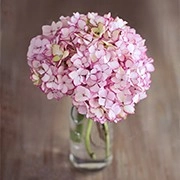Seed Starting Tips

There's something magical about starting plants from seeds. We can watch life unfold right before our eyes—from a tiny speck to a lush, thriving plant. Plus, seed starting gives us more plant choices and can save money too!
But sometimes, we may feel disappointed if our seeds don't sprout well. The good news? We can boost our germination rates with just a few smart techniques. Today, we'll explore simple, practical ways to help our seeds thrive.
Whether you're new to seed starting or want to improve your success, this guide is for you!
Choosing High-Quality Seeds
It all begins with good seeds. No matter how perfect our technique is, poor-quality or old seeds may not sprout well.
Here's how we can set ourselves up for success:
Buy fresh seeds from reputable sources. Check the "packed for" or expiration date on the packet.
Store seeds in a cool, dry place. Humidity and heat can reduce seed viability.
Test older seeds by doing a germination test. Place 10 seeds on a damp paper towel, seal in a plastic bag, and check after a few days to see how many sprout.
Preparing Seeds for Success
Some seeds benefit from special preparation before planting. These techniques can help break dormancy and encourage faster germination:
Soaking: Soak large or hard-coated seeds (beans, peas, sunflowers) in warm water for 6–12 hours before planting. This softens the seed coat and speeds up germination.
Scarification: For extra-tough seeds (morning glories, nasturtiums), gently rub them with sandpaper or nick the coat with a nail file. This allows moisture to enter.
Stratification: Some perennial seeds (lavender, milkweed) need a cold period to sprout. Place them in a moist paper towel in the fridge for a few weeks before planting.
Using the Right Growing Medium
Seeds need the right environment to thrive. Regular garden soil is too heavy for seed starting.
Instead, use a light, well-draining seed starting mix. These mixes are typically sterile and contain peat moss, coconut coir, and perlite or vermiculite.
This type of mix holds moisture while allowing oxygen to reach the developing roots. It also reduces the risk of disease.
Optimal Temperature and Light
Temperature plays a big role in germination. Most seeds germinate best between 65°F and 75°F (18°C to 24°C).
Tips for maintaining ideal warmth:
Place seed trays on a heat mat designed for seed starting.
If using natural warmth, position trays near a warm window or on top of a refrigerator.
Once seedlings appear, move them to a bright light source. Without enough light, seedlings become leggy and weak.
We can use fluorescent grow lights or LED grow lights, positioning them a few inches above the seedlings. Keep the lights on for about 14–16 hours a day.
Watering Wisely
Proper watering is crucial to keeping seedlings healthy.
Keep the growing medium consistently moist but not soggy. Too much water can cause seeds to rot or lead to damping-off disease.
Water gently using a spray bottle or bottom watering (placing the tray in a shallow pan of water).
Covering trays with a humidity dome or plastic wrap during germination can help retain moisture, but be sure to remove it once most seeds have sprouted.
Thinning and Transplanting
Once seeds sprout, it's tempting to let them all grow—but overcrowding can lead to weak seedlings.
Thin seedlings by snipping off the smallest ones with scissors, leaving the strongest one per cell or space.
When seedlings develop their first set of true leaves, it's time to transplant them into larger containers to give their roots room to grow.
Handle seedlings gently by their leaves, not stems, to avoid damage.
Expert Insights
Dr. Carol Deppe, plant breeder and author of The Resilient Gardener, emphasizes: "Patience and observation are key when starting seeds. Pay attention to what your seedlings are telling you—adjust light, moisture, or temperature as needed."
She also advises: "Start with easy-to-grow seeds like lettuce, radishes, and zinnias if you're new. Success builds confidence!"

Let's Grow from Seed!
Starting plants from seed is one of the most rewarding parts of gardening. With the right techniques, we can double—or even triple—our germination success.
So, are you ready to try your hand at seed starting this season? We'd love to hear about your favorite plants to grow from seed or any tips you've discovered. Let's keep learning and growing together! 🌱✨🌼

 · Plant Team
· Plant Team